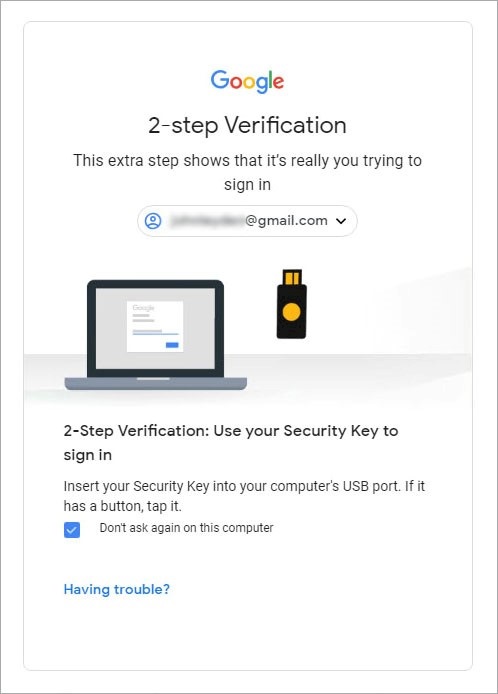
In my setup I used a bio security Key, the Feitian K27. The standard key is used with a PIN code, but some vendors have bio versions of the security key, with fingerprint support. There are several types of FIDO2 security keys of several vendors. Configure Gmail for two factor authentication (FIDO U2F).Configure Outlook for passwordless authentication (FIDO2).With these two examples we get a comparison in the authentication process between FIDO2 and FIDO U2F. But for this article, let`s focus on securing Outlook and Gmail. Among these websites are Gmail, Facebook, Twitter and YouTube. This secures your account, as it will be impossible to sign-in to your account without one of the two factors.įortunately a lot more websites at this moment already support FIDO U2F.

You first authenticate with your (username and) password, but also with a second factor, in this case the security key. This means you can use the key to secure the authentication process with a second factor ( Multi factor authentication).

Unfortunately support for FIDO2 is (at this moment) limited to a handful of personal websites, like .īut besides FIDO2 support, most security keys also support the FIDO U2F protocol. These security keys are designed at first for passwordless authentication with the FIDO2 protocol.

The focus was on using these FIDO security keys in a corporate environment, but these keys can also be used to secure the authentication process for personal usage, like securing your personal email accounts. I shortly described how passwordless authentication works with these FIDO2 security keys. A couple of weeks ago I wrote some articles about passwordless authentication to Windows 10 and SaaS apps (like Office 365) with FIDO2 security keys, from Feitian and Yubico.


 0 kommentar(er)
0 kommentar(er)
